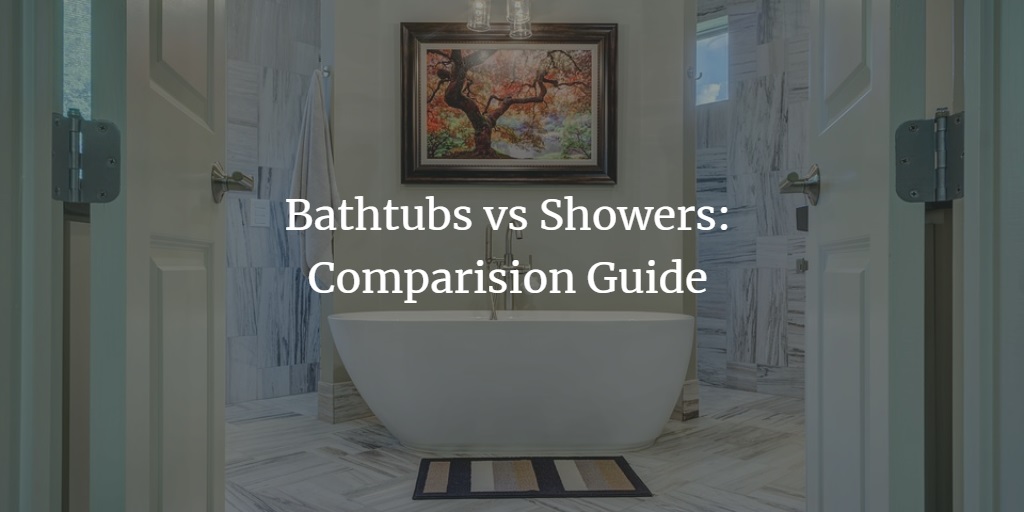
Bath vs Shower: The Key Differences to Consider in 2025
When comparing a shower vs bath, the differences go far beyond water temperature and timing—they reflect your lifestyle, space, and
Looking for a new bathroom floor but don’t know where to begin? When selecting a new floor, you want a durable, water-resistant material and low maintenance. So let’s look at different waterproof flooring ideas to see which one fits your bathroom best.
Your bathroom floor provides support and stability to your bathroom. For this reason, your floor needs to be durable and able to withstand temperature shifts. Additionally, your bathroom floor is also the floor you walk on during the day, so it must be comfortable. Lastly, your floor plays a large role in the look of your bathroom, so it must have visual flair to complement your bathroom’s aesthetic.
These are the most common bathroom floor materials on the market today:
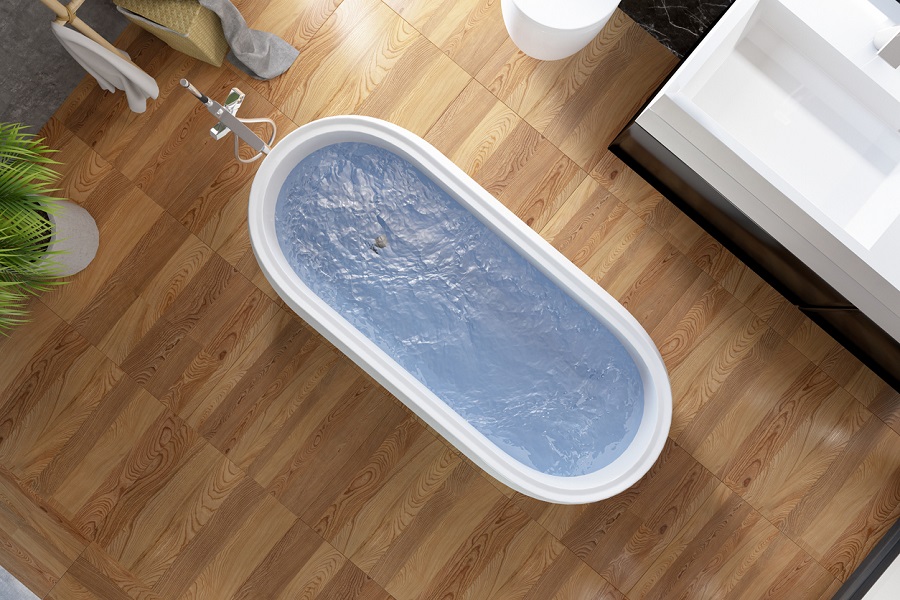
Porcelain tile is made by exposing clay to high temperatures until it hardens, resulting in a stronger tile than ceramic and fairly durable. As a result, porcelain has many design options, is durable, water/stain resistant, and low maintenance. It also absorbs little moisture, is easy to maintain, inexpensive to repair, and is an excellent material for those that want great aesthetics with minimal effort.
Pros
Cons
Laminate flooring comprises a multi-layer flooring product that is fused with lamination. The layers include a dense core of plywood or high-density fiberboard. This layer is followed up with a photo-realistic image layer to mimic any material such as wood or stone. The last layer provides a protective layer for the entire material.
Pros
Cons
Vinyl flooring is a multi-layered synthetic flooring made from plastic, fiberglass, and PVC materials. This material comes in the form of planks, tiles, or sheets that line your floor. A core layer of material comprises the primary material of the flooring with an image or material layer above it that can mimic a wide variety of looks and materials such as wood or ceramic. This top layer also protects the sublayers from any superficial damage, water, or stains.
Pros
Cons
Ceramic tiles are made using a kiln to heat clay until it hardens, making ceramic tiles softer and less dense than porcelain. The clay used is less refined, resulting in a more porous and less durable material than porcelain, providing a more affordable price tag. Ceramic tile, when glazed, is water/stain resistant has a large variety of style options, is durable, and is low maintenance.
Pros
Cons
Binding real pieces make engineered wood of wood, scraps, and shredded fibers to create a product that looks and acts like wood but is more durable. Engineered wood has a plywood base, allowing it to absorb moisture better, but it’s still wood and prone to long-term damage. Engineered wood is the best option if you are sold on having wood in your bathroom but expect to replace it regularly.
Pros
Cons
Stained concrete is a concrete slab that is colored on the surface. The result is an environmentally friendly material, low maintenance, and near-limitless design flexibility and versatility. Since the process is fairly straightforward, stained concrete can be imprinted with a wide range of colors to create a custom color for your floor. In addition to the stylistic flair, it is a low-maintenance material that can weather stains, spills, dirt, and hard impacts.
Pros
Cons
Cork flooring is made by using tree bark that is ground up, compressed, and formed into sheets that are bonded with resin. The material is biodegradable, and cork flooring is often made using recycled cork flooring, making it very eco-friendly.
Pros
Cons
Natural stone flooring uses natural stones such as marble, granite, and limestone to cut directly into the tile. This style is incredibly popular because of its natural beauty, high durability, and high resale value to your home. In addition, stone tile has excellent heat retention and is easy to maintain, replace, and repair. The material is also highly water and temperature-resistant, making it ideal for the bathroom.
Pros
Cons
These are the most popular bathroom floor trends of 2022:
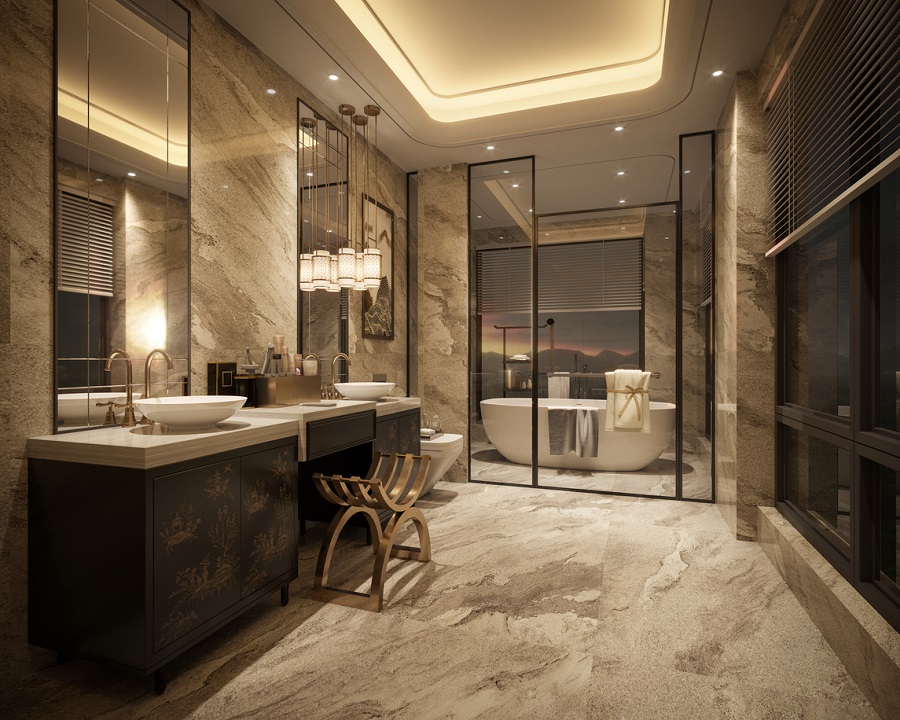
The average cost of installing new flooring is between $150-3,600. Installing tile flooring costs between $10-15 per square foot, but you can find cheaper material for around $3-4 per square foot. So the cost of your floor will largely depend on the material you’ve chosen.
Your master bath should be stylish and have the highest quality flooring. Options such as Marble tile and SPC vinyl floors are great as they provide the best waterproof solutions while enhancing your bathroom’s aesthetic. Natural stone is another popular option, as you can further enhance the luxurious feel of the bathroom space.
Guest bathrooms are not as busy as the other rooms, so you can make a statement with your flooring. Utilize luxury or color materials to create unique tile patterns or mosaics. Or, you can use hardwood to create a unique space for your guests and make your home feel more rustic.
High-traffic floors require a durable material that is also low maintenance. Vinyl is a great choice as it is designed for commercial spaces and can take heavy punishment. Alternatively, you have both porcelain and ceramic tiles as they require little maintenance, are waterproof when sealed, and can take a beating as well. Porcelain and ceramic are also much more environmentally friendly than vinyl.
Guest bathrooms are not as busy as the other rooms, so you can make a statement with your flooring. Utilize luxury or color materials to create unique tile patterns or mosaics. Or, you can use hardwood to create a unique space for your guests and make your home feel more rustic.
Small bathrooms require flooring that can withstand humidity but are also comfortable. Ceramic and porcelain tile are great options here, providing a durable material that can be easily installed and is water resistant when sealed.
Kids are messy and are bound to cause spills and splashes, so you need a durable, waterproof material. Vinyl floors provide a heavy-duty option that will age as your children do. Vinyl is moisture resistant and can also weather a great deal of punishment. Alternatively, porcelain or ceramic tile is great for withstanding heavy traffic.
High-traffic floors require a durable material that is also low maintenance. Vinyl is a great choice as it is designed for commercial spaces and can take heavy punishment. Alternatively, you have both porcelain and ceramic tiles, which require little maintenance, are waterproof when sealed, and can take a beating. Porcelain and ceramic are also much more environmentally friendly than vinyl.
Here are some of the most common ways you can upgrade your bathroom flooring:
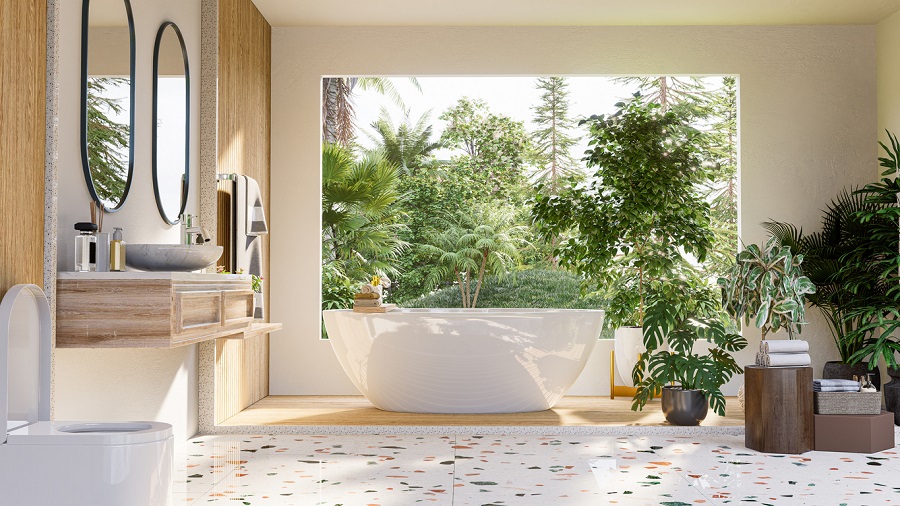
Your bathroom floors can be upgraded with radiant heating systems. Radiant heating systems utilize either heated water or electricity to provide heating through your floor. The heat is quiet and hidden from view, making it a good alternative to standard HVAC heating systems.
Your flooring should be sealed with silicone to prevent moisture from penetrating the material. Your bathroom is heavily saturated with moisture, so it’s important to waterproof the material to prevent any dangerous substances such as mold from occurring.
You can find an example of a Bathroom plan, here.
Note the durability of the material. A high-traffic bathroom floor must be durable to heavy impacts and resistant to moisture. A seldom-used bathroom doesn’t need to be as durable, but it is advised that you find the flooring that can be durable long-term.
A bathroom will see a lot of humidity, so waterproofing or water resistance is essential. Seek out material that is resistant to moisture and if not, ensure that it is adequately sealed against moisture before using.
Consider the maintenance of the material you choose. As a general rule, more affordable materials will require maintenance, whereas more expensive materials will require significantly less maintenance.
Installation costs can be expensive, so choose a material that is easy to DIY and does not require moving fixtures.
Materials can be expensive, so always consider your budget before purchasing. Some materials have a low initial cost but a high long-term cost, whereas others will be expensive but have low upkeep costs. It is essential to consider all these factors before choosing a suitable material.
Consider the safety of those in your home. Vinyl or laminate can be slippery materials, especially in bathrooms. Consider adding textured materials such as rugs to prevent accidents.

Eric is the founder and president of Badeloft USA. He has been the president of Badeloft’s US division for over ten years and oversees all marketing and branding aspects of Badeloftusa.com.
His expertise lies in small business development, sales, and home and bathroom industry trends and information.
Contact us with any business related inquiries.
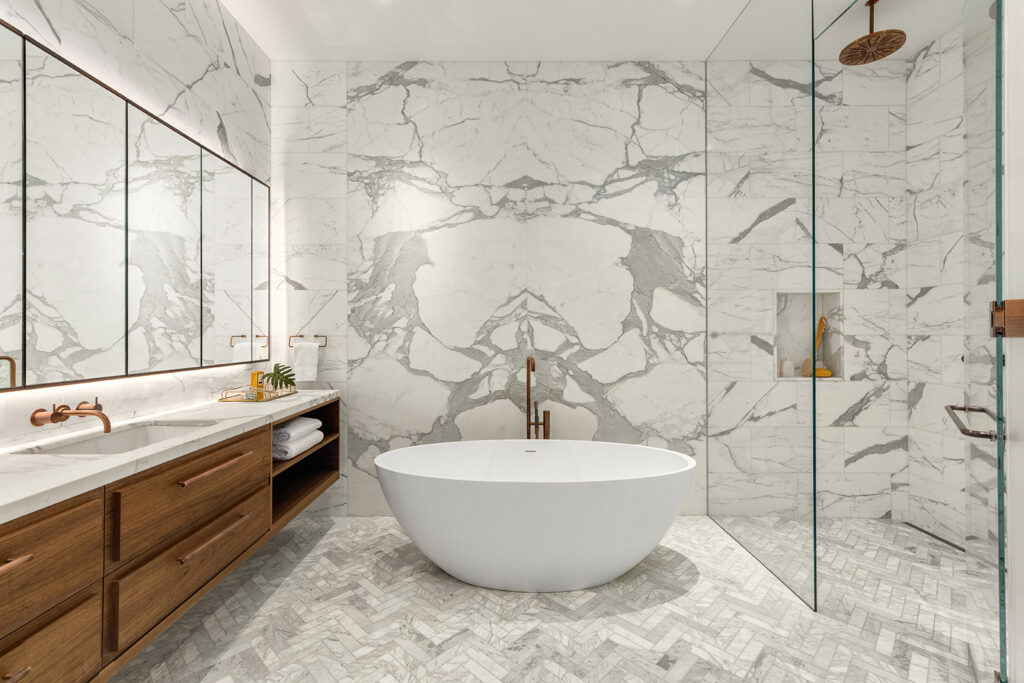
Free material samples and tub templates

When comparing a shower vs bath, the differences go far beyond water temperature and timing—they reflect your lifestyle, space, and
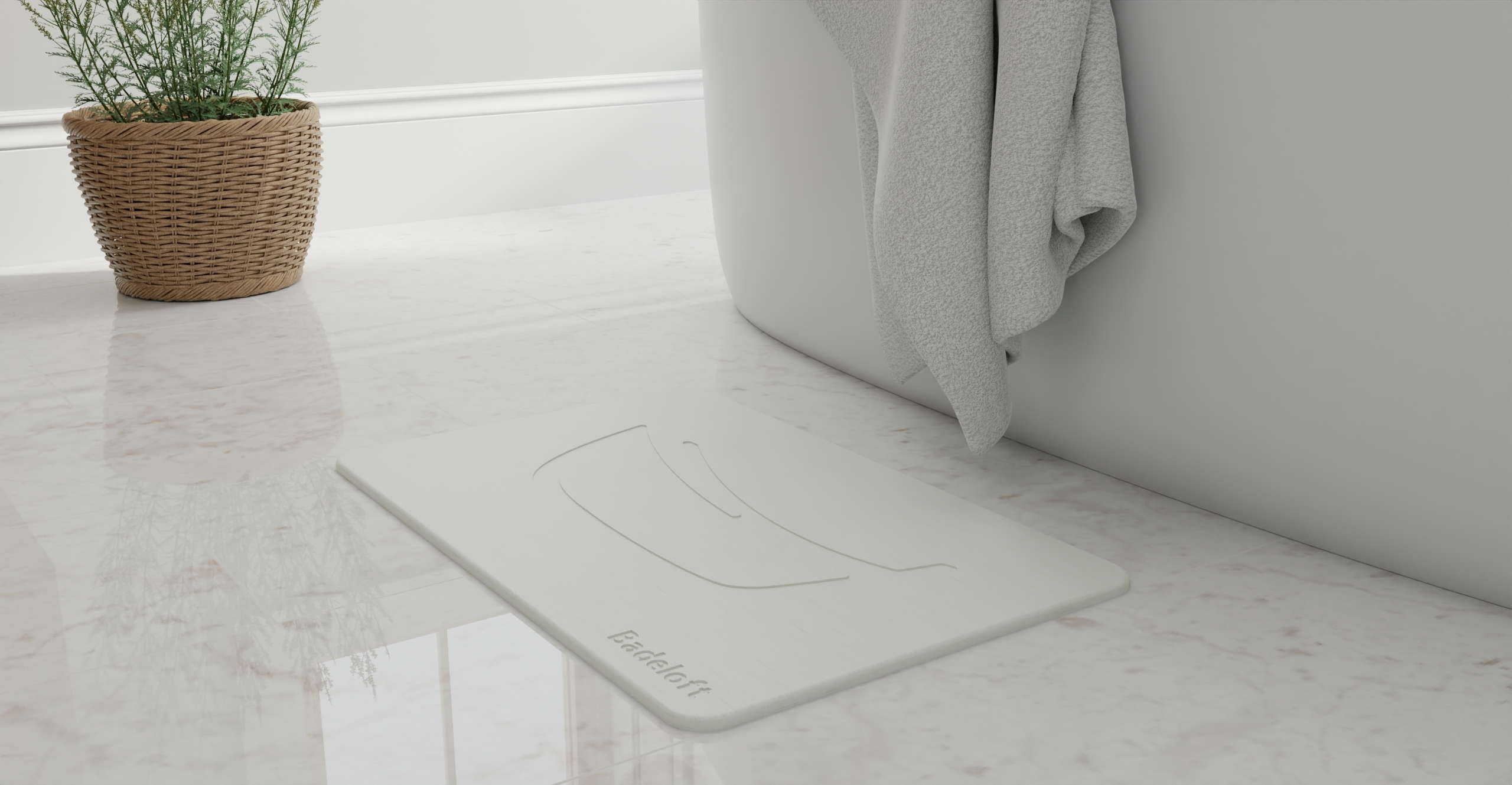
In 2025, bath mats are doing more than just soaking up water—they’re adding comfort, enhancing safety, and complementing the style
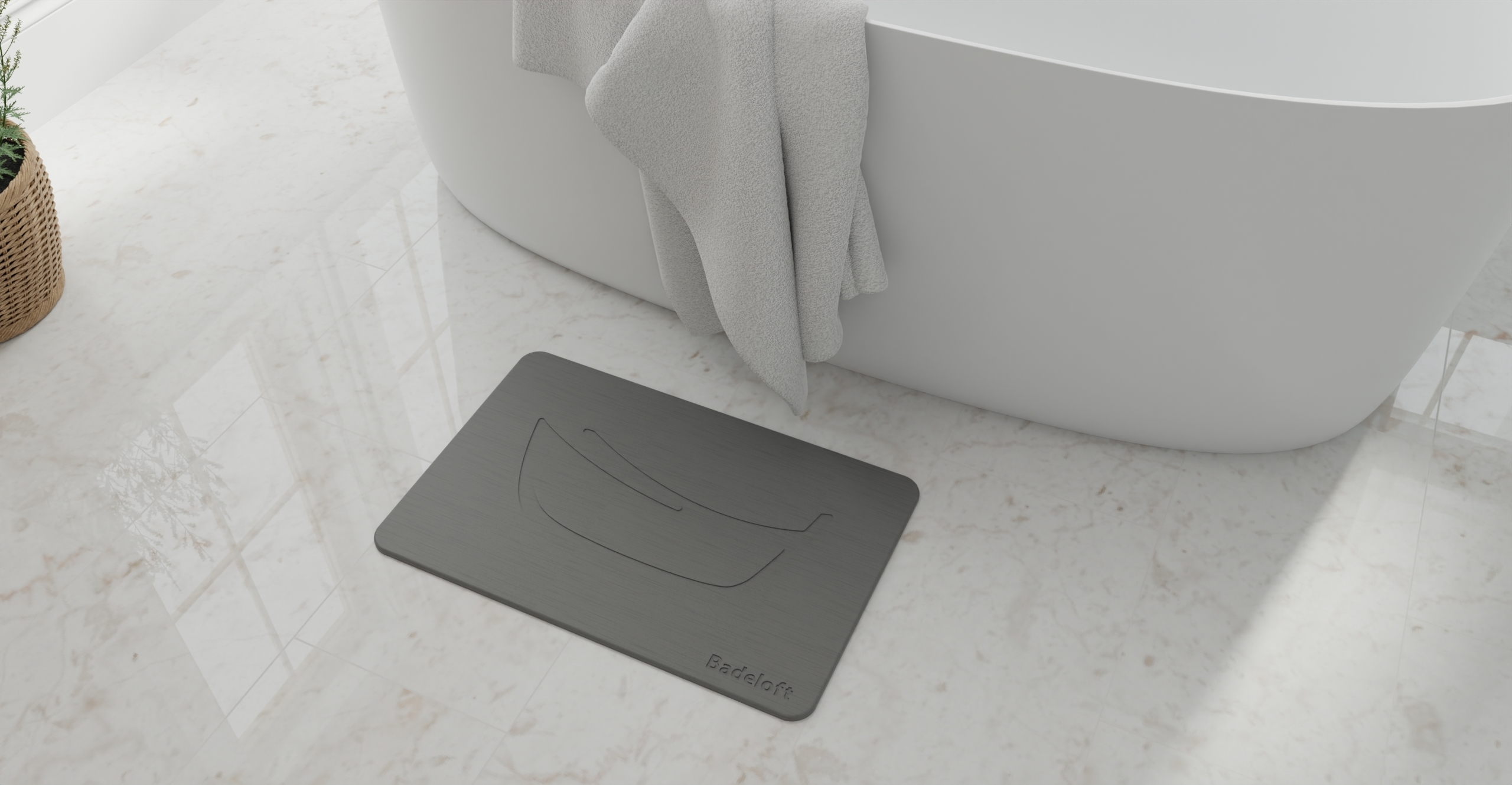
Bath mats may seem like a small detail, but their price can vary significantly based on material, size, brand, and
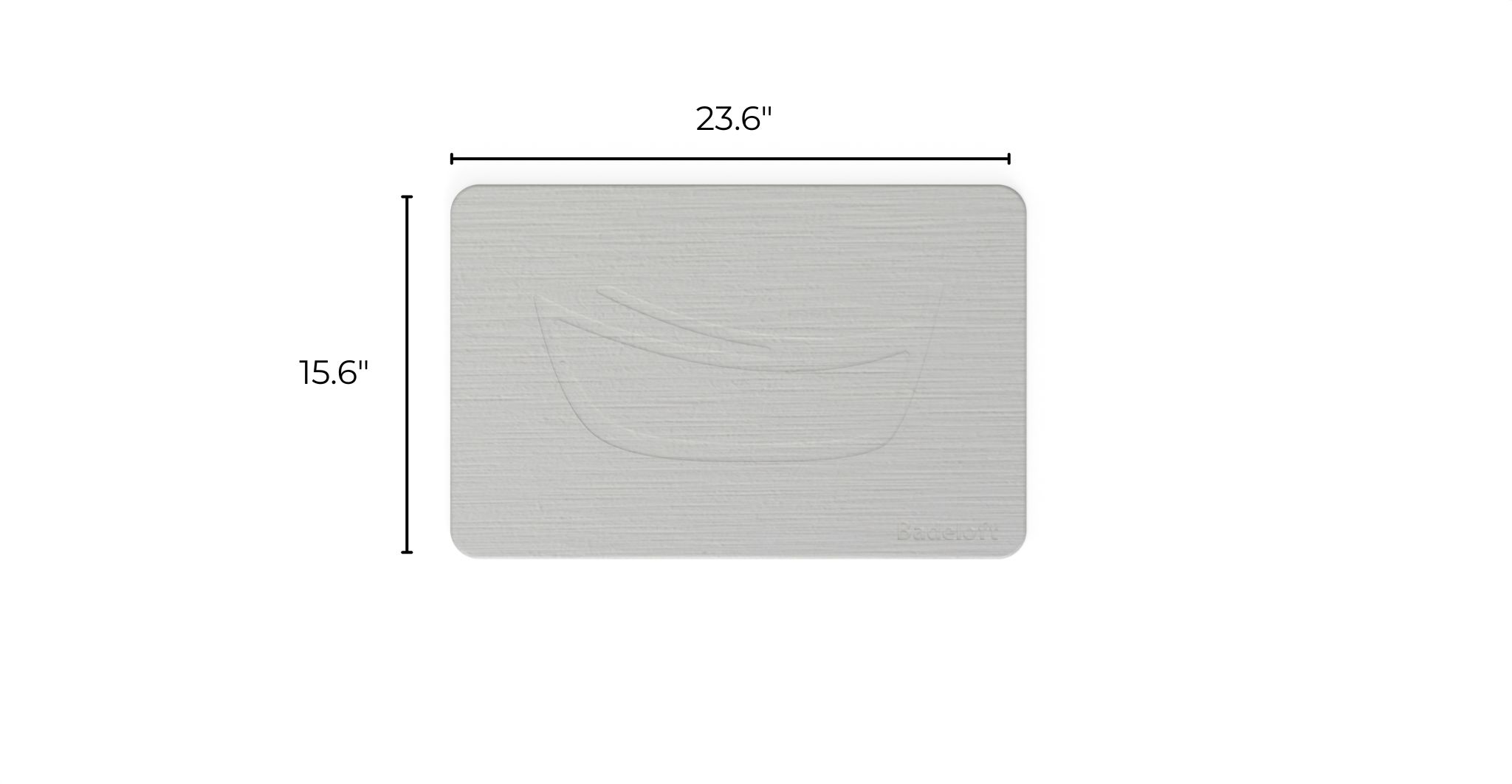
Choosing the right bath mat size is essential for both function and style. Whether you’re outfitting a compact powder room
Fill out the form below to request a free material sample
"*" indicates required fields
"*" indicates required fields
"*" indicates required fields